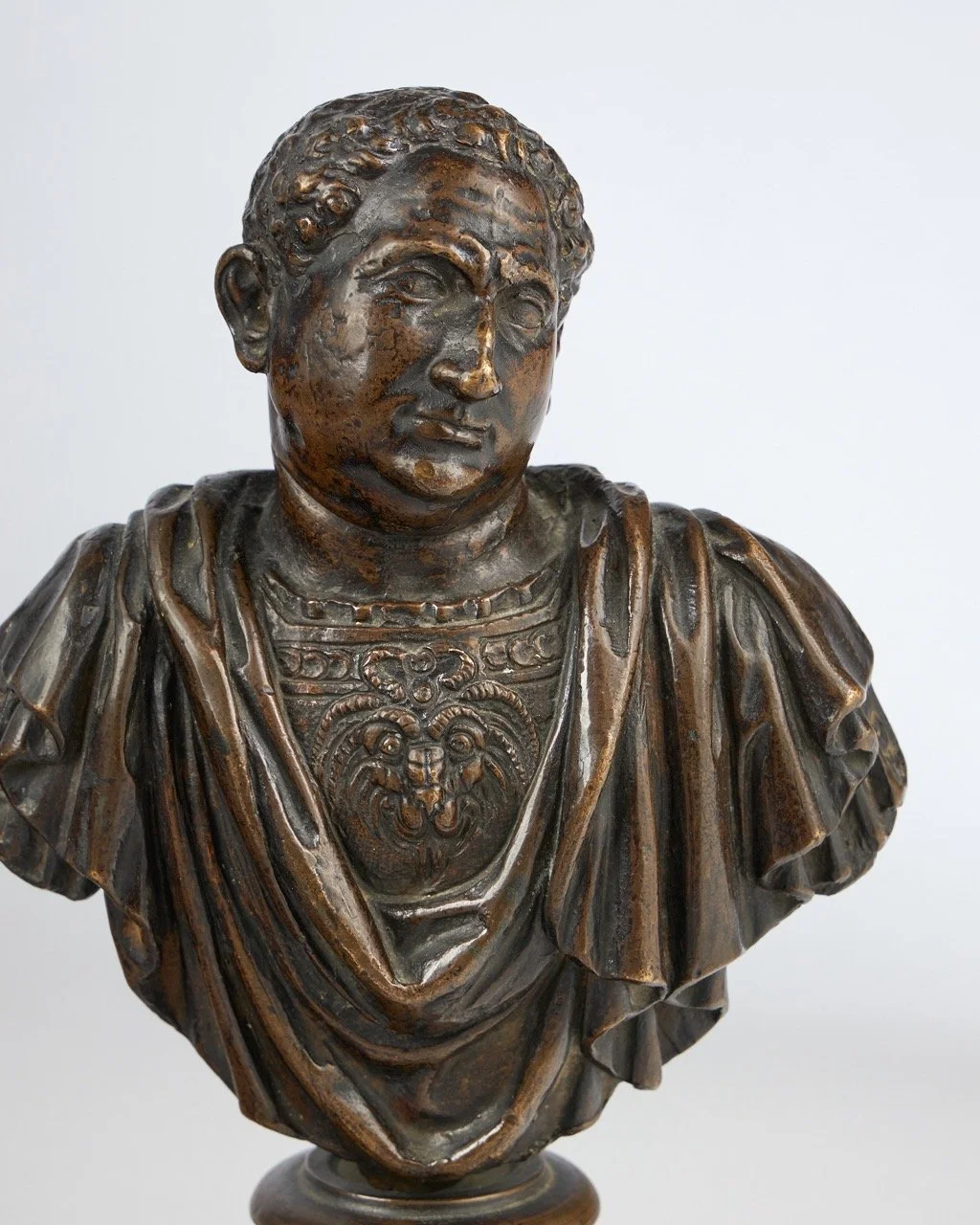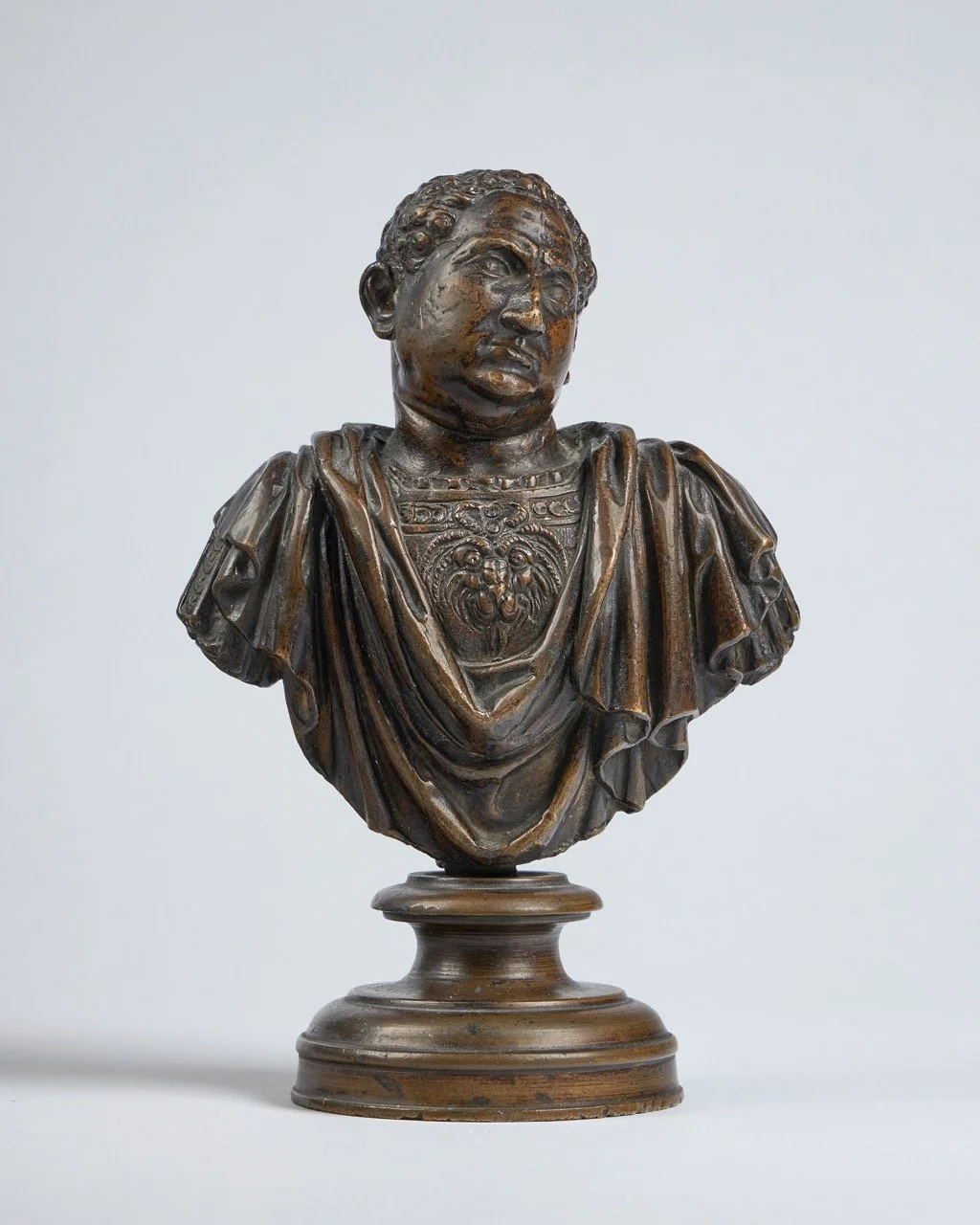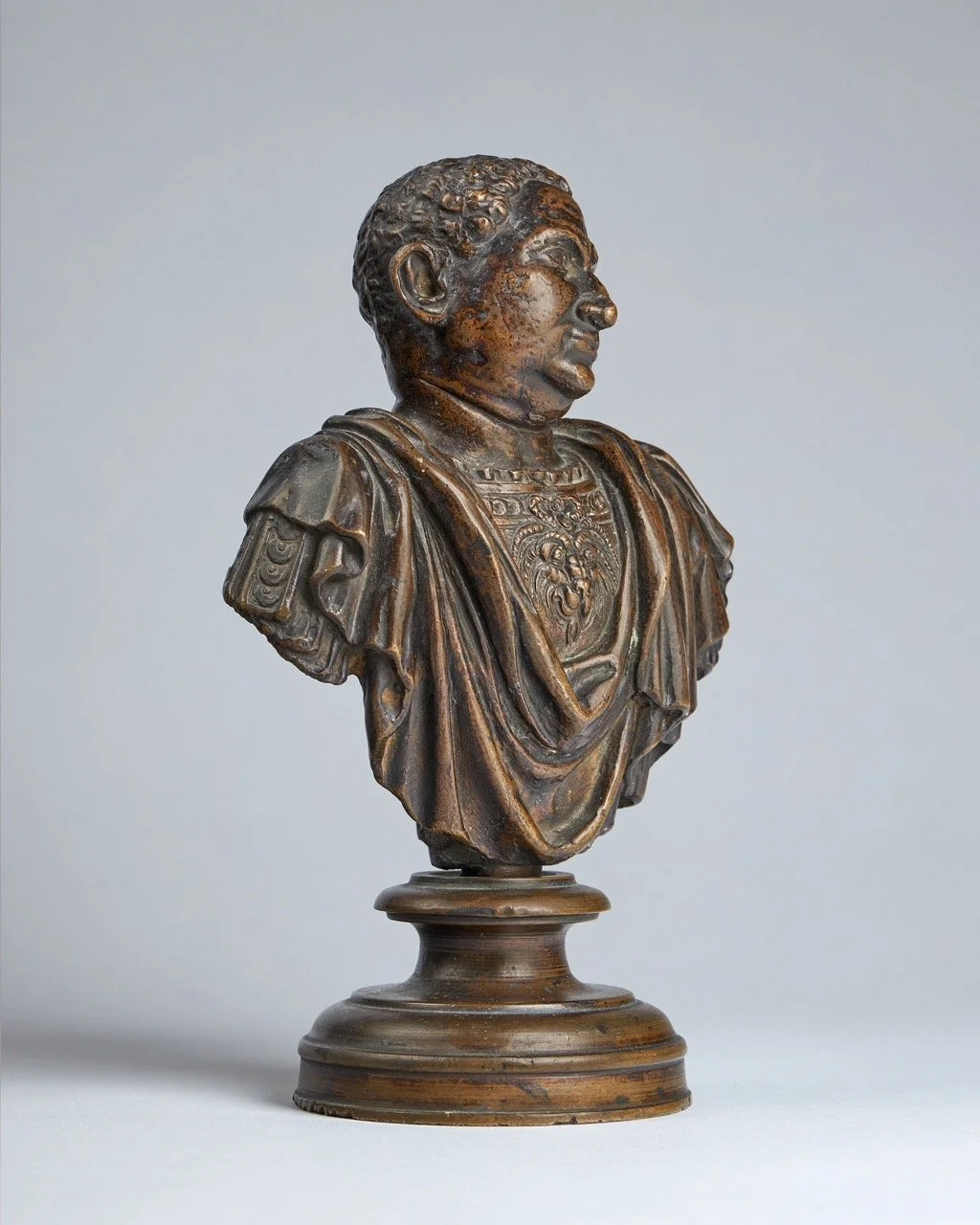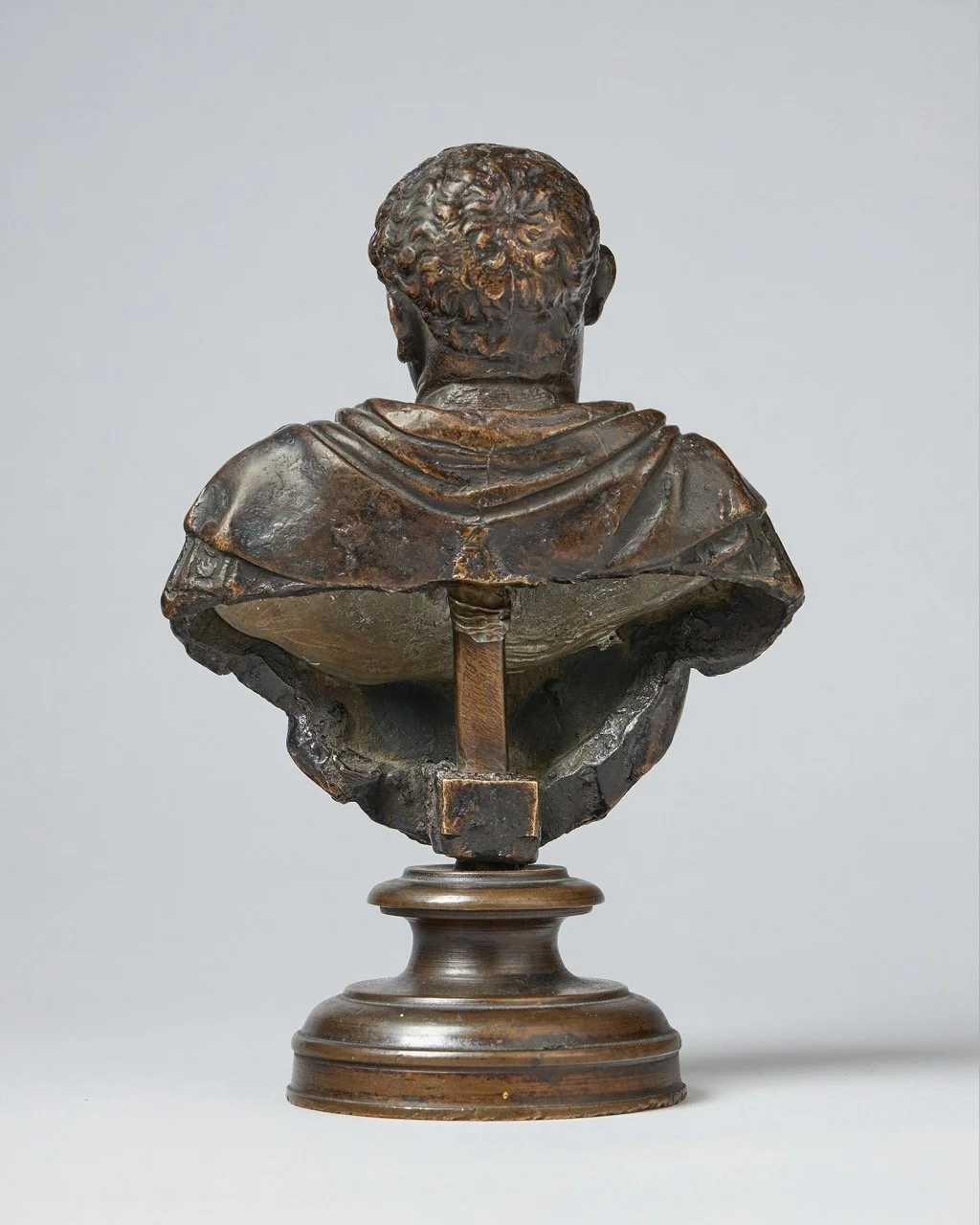Renaissance Bust of Vitellius
Renaissance Bust of Vitellius
North Italian, 16th century
Bronze, on a later bronze socle
18 cm. / 7 ins (the bust), 23 cm. / 9 ins overall
This small yet attractive all’antica bust of a Roman emperor is inspired by a bust in Venice thought to depict Vitellius (15-69 AD), who ruled Rome for only eight months in 69 AD before he was overthrown by Vespasian.
The Vitellio Grimani, also known as the pseudo-Vitellius, was discovered in Rome in 1505 during excavations on the Quirinale on land owned by the Venetian cardinal Domenico Grimani (1461-1523). On the death of Grimani the Vitellius was sent to Venice and bequeathed to the Republic of Venice, where it was displayed at the Palazzo Ducale from 1525 to 1593. It is now in the Museo arceologico nazionale di Venezia (inv. 20, fig. 1) and regarded as a portrait of an unknown Roman from the first half of the second century AD.
The present small bust, with its rough, waxy surface and imaginative adaptation of the antique model on which it is based, bears all the hallmarks of Renaissance bronze modelling in the north of Italy. Indeed, the vigorous modelling is reminiscent of the works by Andrea Briosco, called Il Riccio (1470-1532), who worked in Padua in the Veneto and specialised in small bronzes based on antique subjects. See, for example, his head of Bacchus (private collection, offered at Sotheby’s London in 2021), which has a similarly waxy treatment of the hair.
The fantastical lion-mask on the breastplate, with its stylised face and unusual braids of hair, is also typical of the imaginative re-working of antique motifs by Renaissance artists. This indicates that the present bust is probably by a follower of Riccio working in Padua or another centre of classicism in the Veneto.
RELATED LITERATURE:
L. Planiscig, Andrea Riccio, Vienna, 1927, p. 222
Please click here to enquire about this item





